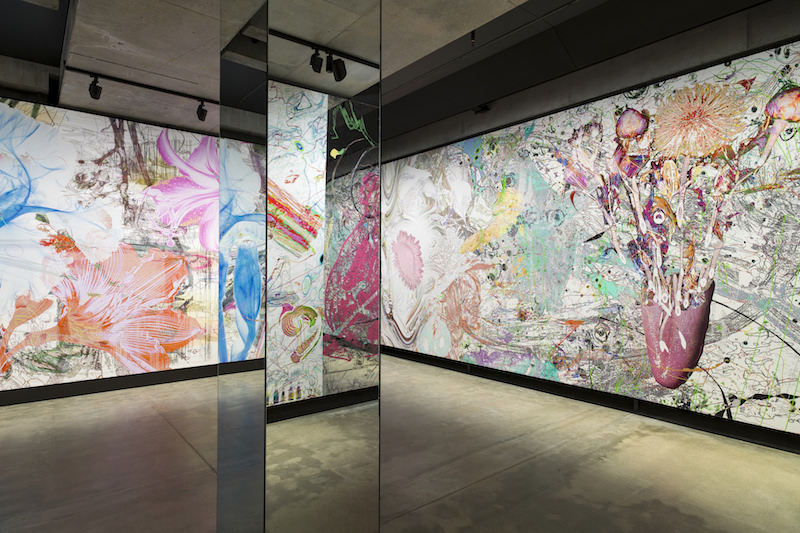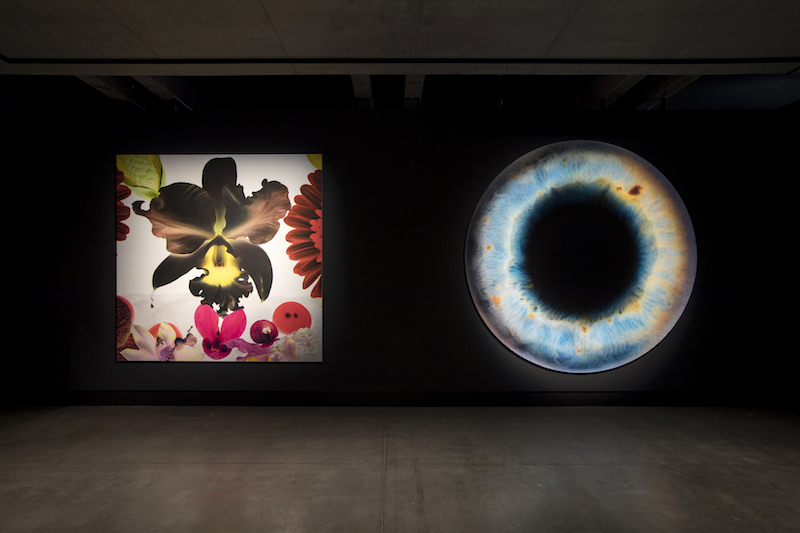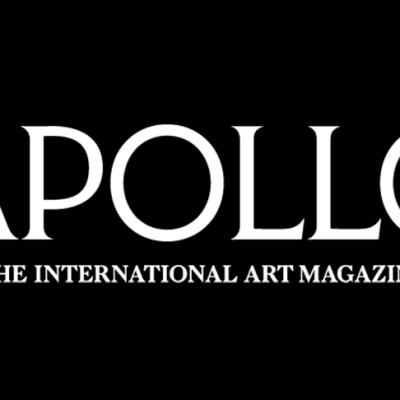Since opening in 2011, the Museum of Old and New Art (Mona) in Hobart, Australia, has put man’s biological impulses and realities at the heart of its curatorial mission. Mona’s founder David Walsh declared infamously that the only relevant themes in contemporary art (and the ones guiding his personal collection) were sex and death. Newspaper headlines responded with glee. Richard Flanagan, a prominent Tasmanian author and Man Booker Prize winner, commented pointedly in a 2013 New Yorker profile of Walsh and Mona that: ‘In its free-flowing associations, Mona owes as much to the Web as it does to the past, and a visitor doesn’t so much visit Mona as surf it. It is as if the museum in its entirety were the art work.’
Who Says Your Feelings Have to Make Sense (2016), Aspassio Haronitaki, installation view, Mona. Photo: Mona/Rémi Chauvin

It seems fitting that with its latest exhibition, ‘On the Origin of Art’, Mona defines more clearly what it wants to say about art; Mona’s senior research curator Jane Clark describes this curatorial drive as the ‘biocultural’. Put simply, ‘On the Origin of Art’ asks ‘what does art do for us in an evolutionary sense?’. In an attempt to bridge the gap between art and science, the exhibition examines the links between evolutionary biology and art with the help of four renowned evolutionary theorists and scientists – Steven Pinker, Geoffrey Miller, Brian Boyd and Mark Changizi. The genesis of the exhibition began, curator Jarrod Rawlins tells me, as early as 2011, but in earnest since 2013. Each scientist worked separately with the Mona curatorial team – with no communication between each scientific lead – and the result is an exhibition in four segregated parts.
Mona’s expansive collection is well-suited to the premise of this exhibition, but the show in fact borrows the majority of its works from some 58 international institutions; the exhibition also features nine new commissions. The scale of the show is significant, with 234 objects from 35 countries, spanning millennia and cultures. The old and new intermingle in ways that Mona has always excelled (I still recall the joy of seeing a room on my first visit in 2014 that held a rare vinyl pressing of David Bowie’s Changes opposite an Egyptian hieroglyphic stone seal). Within this exhibition, examples of such rewarding cross-era conversations include the pairing of Australian painter Brett Whiteley’s Blue Lovers (1984–85) with erotic ukiyo-e (woodblock prints) by early 19th-century Japanese artists Katsushika Hokusai and Yanagawa Shigenobu. One of the key successes of the exhibition is that the four scientific leads’ theories and their respective exhibitions are propositional – none are definitive.
In the Night Garden: Hale-Bopp (2012) (left) and We Share Our Chemistry with the Stars (AJ 280R) DIL2214 (2009) (right), Marc Quinn, installation view, Mona. Photo: Mona/Rémi Chauvin

The title of the exhibition draws inspiration from Charles Darwin, but also from Brian Boyd’s book On the Origin of Stories. Darwin and his influence on evolutionary theory tempers much of the exhibition, particularly in Geoffrey Miller’s section. Miller puts forward an argument for the reproductive value of art, as a ‘signalling system’ to attract mates. Here, Jeff Koons’ Manet (1991; from his notorious Made in Heaven series) is accompanied by Swiss artist Pipilotti Rist’s Pickelporno (1992) and Japanese artist Takashi Murakami’s My Lonesome Cowboy (1998), a sculpture depicting a muscular anime character conjuring his ejaculation from the tip of his erect penis into an ascending coil above his head. In the accompanying audio guide, Miller cites Koons as key to his argument, stating both his artistic and financial success alongside his reproductive prowess (Koons has eight children). Where non-heteronormative artists stand within this mix is a question that Miller and ‘On the Origin of Art’ more generally leave unanswered. As Joan Roughgarden, an American evolutionary biologist, described in a TED talk from 2011: ‘the existence of gender and sexuality variation is problematic for biology.’
Dots Obsession – Tasmania (2016), Yayoi Kusama, installation view, Mona. Photo: Mona/Rémi Chauvin; © Yayoi Kusama. Courtesy YAYOI KUSAMA Inc., Ota Fine Arts, Tokyo/ Singapore and Victoria Miro Gallery, London

Cognitive scientist Steven Pinker’s section considers art as a form of ‘pleasure technology’ and features predominantly more traditional work, including French Impressionist Pierre-Auguste Renoir, English-born Australian colonial painter John Glover and botanical illustration by American artist Martin Johnson Heade – with one of the exceptions being a stunning Bridget Riley entitled Remember (1964). Literature professor Brian Boyd instead proposes ‘art as play with pattern’, challenging in his audio commentary some of the more reductive aspects of Miller’s theory. The pairing of New Zealand artist Fiona Pardington with Brisbane-based artist Vernon Ah Kee provides salient warning of the historical and morally corrupt application of art making techniques (photography) in scientific settings (phrenology).
Theoretical neurobiologist Mark Changizi’s theory of art as ‘nature-harnessed’, informed by the world around us and built to shape our minds towards comprehension of the world, is especially knotty and often the most thrilling. Changizi’s audio commentary for Thomas Bayrle’s Superstars (1993), a video work featuring a shape-shifting, colour-pulsing human head constructed from images, is a fascinating comparison with Changizi’s research into the evolution of colour vision to detect blood states and thus emotional communication: ‘our faces are like television monitors, with pixels capable of their own RGB display.’
Ajax and Cassandra (1886) (left) and Eros (c. 1921) by Solomon J. Solomon, and India (Frost) (2013) (right) by Ryan McGinley, installation view, Mona. Photo: Mona/Rémi Chauvin

The key strength of ‘On the Origin of Art’ is the conflation between two typically anomalous worlds. Mona’s advocacy for this perspective is to be respected, and its value in expanding our conception of the purpose of art is important. With this show, Mona has stepped up and announced itself as not just a divergent art institution, but one with much more than sex and death on its mind.
‘On the Origin of Art’ is at the Museum of Old and New Art (Mona), Hobart, Australia until 17 April.



